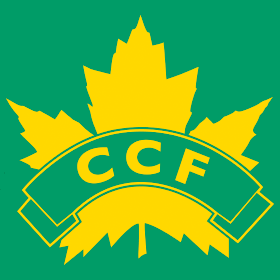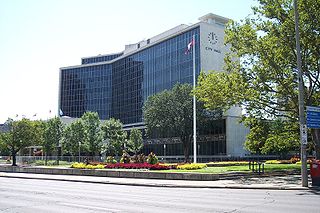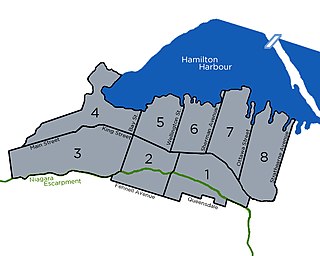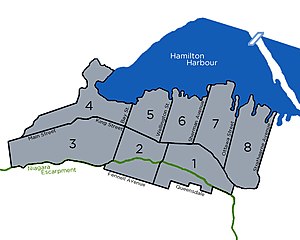There have been various groups in Canada that have nominated candidates under the label Labour Party or Independent Labour Party, or other variations from the 1870s until the 1960s. These were usually local or provincial groups using the Labour Party or Independent Labour Party name, backed by local labour councils made up of many union locals in a particular city, or individual trade unions. There was an attempt to create a national Canadian Labour Party in the late 1910s and in the 1920s, but these were only partly successful.

The Co-operative Commonwealth Federation (Manitoba) (CCF), known informally as the Manitoba CCF, was a provincial branch of the national Canadian party by the same name. The national CCF was the dominant social-democratic party in Canada from the 1930s to the early 1960s, when it merged with the labour movement to become the New Democratic Party. The Manitoba CCF, created in 1932, played the same role at the provincial level.
Edwin Arnold Hansford was a politician in Manitoba, Canada, and served as leader of that province's Co-operative Commonwealth Federation between 1948 and 1952.
Lloyd Cleworth Stinson was a politician in Manitoba, Canada, and the leader of that province's Co-operative Commonwealth Federation (CCF) from 1953 to 1959. Although widely regarded as a capable leader, he was unable to achieve a major electoral breakthrough for his party.

The Co-operative Commonwealth Federation – The Farmer-Labor Party of Ontario, or more commonly known as the Ontario CCF, was a democratic socialist provincial political party in Ontario that existed from 1932 to 1961. It was the provincial wing of the federal Co-operative Commonwealth Federation (CCF). The party had no leader in the beginning, and was governed by a provincial council and executive. The party's first Member of the Legislative Assembly (MLA) was elected by voters in the 1934 Ontario general election. In the 1937 general election, no CCF members were elected to the Ontario Legislature. In 1942, the party elected Toronto lawyer Ted Jolliffe as its first leader. He led the party to within a few seats of forming the government in the 1943 general election; instead, it formed the Official Opposition. In that election, the first two women were elected to the Ontario Legislature as CCFers: Agnes Macphail and Rae Luckock. The 1945 election was a setback, as the party lost most of its seats in the Legislature, including Jolliffe's seat. The party again became the Official Opposition after the 1948 general election, and defeated the Conservative premier George Drew in his seat, when Bill Temple unexpectedly won in the High Park constituency. The middle and late 1940s were the peak years for the Ontario CCF. After that time, its electoral performances were dismal, as it was reduced to a rump of two seats in the 1951 election, three seats in the 1955 election, and five seats in the 1959 election. Jolliffe stepped down as leader in 1953, and was replaced by Donald C. MacDonald.

Hamilton City Council is the governing body of the City of Hamilton, Ontario, Canada. Since 21 November 1960, Council has met at Hamilton City Hall at 71 Main Street West.
The 1936 Manitoba general election was held July 27, 1936 to elect Members of the Legislative Assembly of the Province of Manitoba, Canada. The Liberal-Progressives won minority government in this election, taking 23 seats out of 53 and 35 percent of the vote.

The 1988 Hamilton municipal election was held on November 14, 1988 to elect a Regional Chairman, a Mayor, sixteen members to Hamilton, Ontario City Council, seventeen members to the Hamilton Board of Education and thirteen members to the Hamilton-Wentworth Roman Catholic Separate School Board.

The 1985 Hamilton municipal election was held on November 12, 1985 to elect a Mayor, sixteen members to Hamilton, Ontario City Council, fourteen members to the Hamilton Board of Education and sixteen members to the Hamilton-Wentworth Roman Catholic Separate School Board. In addition, this election was accompanied by a referendum question asking voters if they wanted to directly elect individuals to the office of Regional Chairman.

Politically, Hamilton is known for producing groundbreaking, colourful and left-wing politicians. Locally, though, the big political stories have included the controversial amalgamation of Hamilton with its suburbs in 2001, the destruction of green space around the Red Hill Valley to make way for the Red Hill Creek Expressway, and plans to build a Light Rail Transit line in the city.

The 1944 Hamilton municipal election was held on December 4, 1944 to select one Mayor, four Controllers, and sixteen members of the Hamilton, Ontario City Council. Voters also elected one member per-ward to the local Public School Board for a two-year term.

The 1946 Hamilton municipal election was held on December 9, 1946, to select one Mayor, four Controllers, and sixteen members of the Hamilton, Ontario City Council, as well as members of the local Board of Education. Held immediately following the 1946 Stelco strike, the election set a record for voter turnout, with 65.1% of eligible voters casting a ballot.

The 2014 Hamilton municipal election was a municipal election that occurred on October 27, 2014, to select one mayor, fifteen members of the Hamilton City Council and members of both English and French Public and Catholic School Boards. As per the Ontario Municipal Elections Act, nominations opened on January 2, 2014, and closed on September 12, 2014. Four new councillors were elected in open seats across Hamilton while all incumbents who stood for re-election had returned to office. Though marked by a steep decline in voter turnout, this election was historic, as it saw the election of Hamiton's first openly gay and first racialized members of city council.

The 1932 Hamilton municipal election was held on December 5, 1932 to select one Mayor, four Controllers, and sixteen members of the Hamilton, Ontario City Council, two from each of the city's eight wards. Voters also cast ballots for trustees for the public school board.

The 1933 Hamilton municipal election was held on December 4, 1933 to select one Mayor, four Controllers, and sixteen members of the Hamilton, Ontario City Council, two from each of the city's eight wards. Voters also cast ballots for trustees for the public school board.

The 2018 Hamilton municipal election was a municipal election that occurred on October 22, 2018, as per the Ontario Municipal Elections Act, 1996. Residents of Hamilton selected one mayor, members of the Hamilton City Council, and members of both the English and French Public and Catholic School Boards.
The 1927 Hamilton municipal election was held on December 5, 1927 to select one Mayor, one Hydro Commissioner, four Controllers, and sixteen members of the Hamilton, Ontario, City Council, two from each of the city's eight wards. Voters also cast ballots for trustees for the public school board, and in two bylaw referendum questions regarding an expansion to Hamilton's General Hospital and the city's sewer system.
The 1935 Hamilton municipal election was held on December 2, 1935 to select one Mayor, four Controllers, and sixteen members of the Hamilton, Ontario, City Council, two from each of the city's eight wards. Voters also cast ballots for trustees for the public school board, and in three plebiscites that sought to restructure elections for both city council and the public school board.
The 1890 Cardiff County Borough Council election was held on Saturday 1 November 1890 to elect councillors to Cardiff County Borough Council in Cardiff, Wales. These were the second all-Cardiff elections since the creation of the county borough. They were first to take place since the increase in number of electoral wards from four to ten.
The 1892 Cardiff County Borough Council election was held on Tuesday 2 November 1892 to elect councillors to Cardiff County Borough Council in Cardiff, Wales. These were the fourth all-Cardiff elections since the creation of the county borough. The previous elections were in November 1891 and the next elections were in November 1893.







